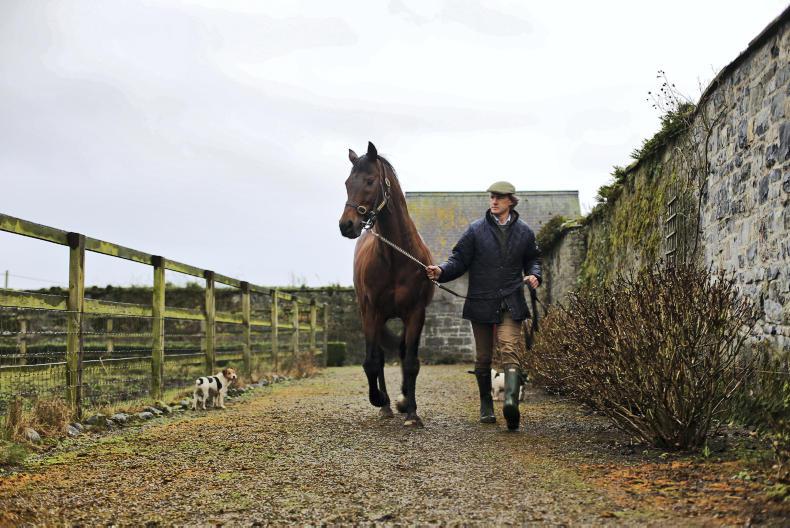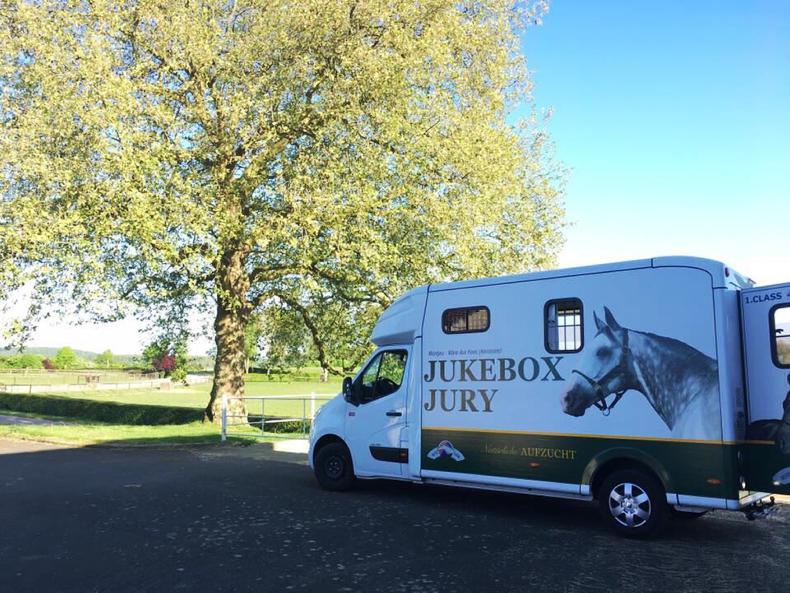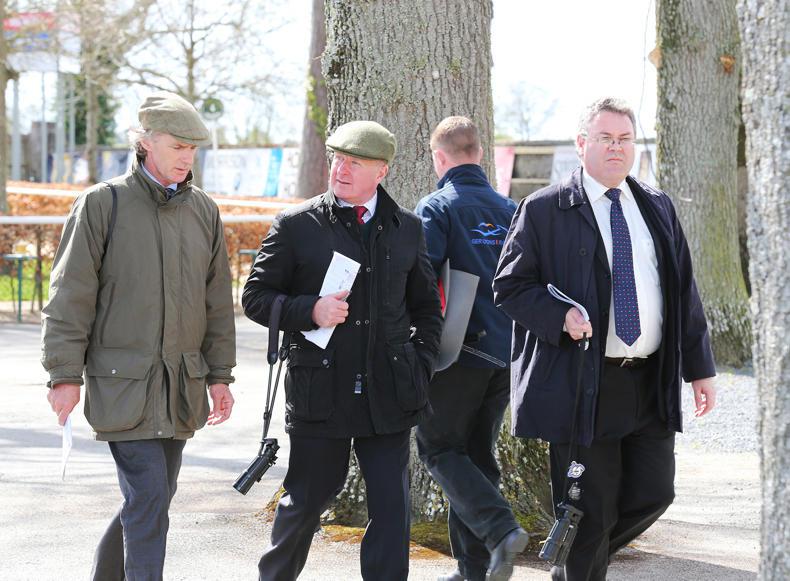ALL the talk in racing these days is about looking after the grassroots and getting new people to the races. We need to give more chances to the smaller owners, trainers and jockeys to compete. And we should be recruiting tomorrow’s racegoers while they’re young.

Shantou at Burgage Stud. Photo Amy Lynam
Victor Connolly of Burgage Stud in Leighlinbridge, Co Carlow, believes the same applies to breeders. Not only should the existing small breeders be cherished, we should be looking to attract the next generation of thoroughbred breeders. The ITM Irish Stallion Trail will help, he says.
Established in 1946 by Terence Vigors, Burgage Stud stood leading sire Sovereign Path (Champion European Sire 1970) and was acquired by the Connolly family in 1978. Victor returned home in 1995 and the stud now has a reputation for standing top-class National Hunt or dual-purpose horses such as Bob Back, Shantou and now Jukebox Jury. Sea Moon is waiting in the wings with his first crop now two-year-olds.
“The Stallion Trail gives people who are interested in the business a chance to see some great stallions,” says Victor. “They may never have owned a broodmare and so may feel they are not entitled to visit a stallion stud on other open days which are aimed at professional breeders. But who knows, in a few years their situation may change and they might become a mare owner. Everyone is a potential customer.”
And even if many of your visitors are just having a day out, what’s the harm? “Some of them are racing fans who just want to see and take pictures of stallions they remember from their racing days. If that helps people feel positive about racing and breeding, then that’s good. We’re giving something back.”
From the racing sphere, Victor nominates racehorse owner Barry Connell as an example of someone who became a big investor after being bitten by the bug. “I often wonder if Barry Connell hadn’t had the chance to ride in charity races, would he have gone on to take out an amateur licence and ultimately invest in a string of racehorses and his own training yard? Everyone needs encouragement to become involved. A chance to dip your toe in, and a pathway that can be accessible.”
Burgage Stud welcomed more visitors than usual last year as there was strong interest in new arrival Jukebox Jury. “A lot of people wanted to  see him, even those who didn’t have a suitable mare. When you have a new stallion, or one who has suddenly become successful, you tend to see a surge in interest. It’s never a burden to show the stallions and you never know who you might meet.”
see him, even those who didn’t have a suitable mare. When you have a new stallion, or one who has suddenly become successful, you tend to see a surge in interest. It’s never a burden to show the stallions and you never know who you might meet.”
As further evidence of the Stallion Trail’s importance and success, Victor observes that Britain and France have now followed on with similar initiatives.
Not only do we not know where the next generation of breeders will come from, nobody knows where the next good stallion will emerge. Ronnie O’Neill at nearby Whytemount Stud hit the jackpot with Stowaway, while Sandmason has emerged as a great money-spinner for Paul Rothwell of Lacken Stud in Bunclody.
“It is so important that independent, smaller stallion farms stand stallions that succeed, and all the better if that success has come from an unlikely beginning. This encourages others to invest. Every stallion in theory has the chance to become a good sire. You never know where that success can spring from.
“We know there is no rulebook that explains how to produce a successful racehorse. Many breeders have different theories, but everyone has a chance. Stallion owners are entitled to cover large books of mares but the policy at Burgage is to tend to go for less numbers and try, if we can, to attract quality mares and successful breeders. Supply and demand runs every business. And demand determines the price.”
Restricted book size did not harm Bob Back or Shantou. Jukebox Jury was not exactly idle in his first season at Burgage, where he covered a solid book of over 160 mares.
“We’ve seen stallions come to Ireland from France in particular which have proved themselves from relatively small books. In fact sometimes that is what makes them so attractive. Breeders here are inclined to follow fashion – often with unproven sires – but they should never be afraid to consider different approaches in their quest to improve their pedigrees.”
A deep thinker, Victor is someone who cares about the long-term future of the industry. A conversation with him is always enlightening as he is happy to share his considered opinions on a range of racing-related issues.
He admires the French jump breeders system of breeding more for the racetrack, and less for the sales ring. “In France there are bonuses for French-bred winners, and while we don’t enjoy the same situation in Ireland, the French system helps to give all stallions a fair opportunity. When previously unconsidered stallions prosper it introduces vibrancy and new blood into the breed. Maybe we can learn something from that.”
Victor also points to the popularity of racehorse ownership in Australia, a country where the average wage earner speaks enthusiastically about racing and are regularly part of successful syndicates. “Again, they don’t have the same bookmaking industry involvement that we have here. It’s a different model but yet it gives great hope – so can we pick something from it? Small changes can make big differences. Any innovation that attracts new owners is always welcome.”
He is a director at Gowran Park, following on from his father, and he is an acting steward. Of his fellow directors he says: “They are a good group of people who have Gowran’s best interests at heart. Joe Connolly [chairman] has great vision and is not afraid to take a big  decision, which you need in every company. Manager Eddie Scally is very able and enterprising. One of the important aims for Gowran Park is to provide a good racing surface for horse welfare and for their continued soundness. Hopefully everything else follows.”
decision, which you need in every company. Manager Eddie Scally is very able and enterprising. One of the important aims for Gowran Park is to provide a good racing surface for horse welfare and for their continued soundness. Hopefully everything else follows.”
Literally looking after the grassroots.


 This is a subscriber-only article
This is a subscriber-only article
 It looks like you're browsing in private mode
It looks like you're browsing in private mode














SHARING OPTIONS: